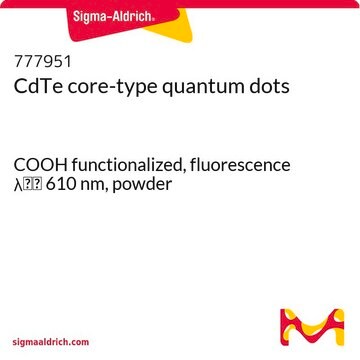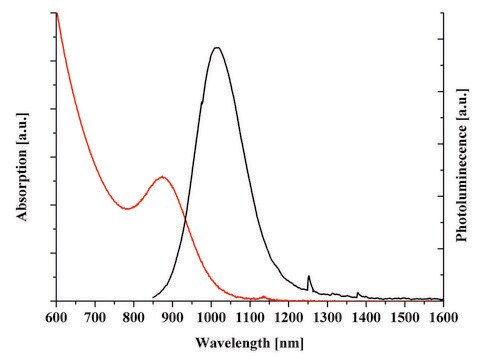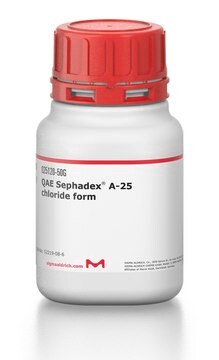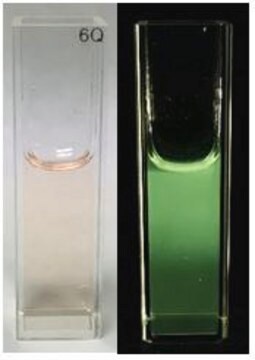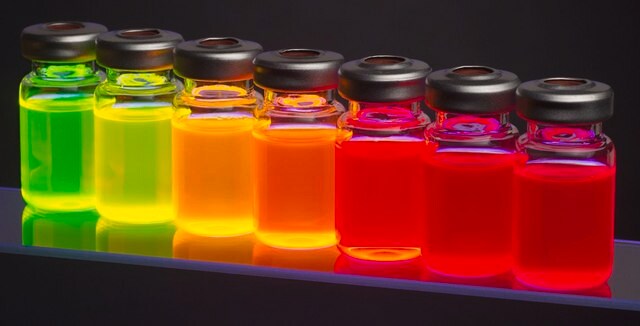Wichtige Dokumente
753793
CdSeS/ZnS alloyed quantum dots
fluorescence λem 630 nm, 6 nm diameter, 1 mg/mL in toluene
Synonym(e):
QD alkyl functionalized, Fluorescent Nanocrystals, Trilite™
About This Item
Empfohlene Produkte
Form
liquid
Qualitätsniveau
Konzentration
1 mg/mL in toluene
Brechungsindex
n20/D 1.496 (lit.)
n20/D 1.496
Durchmesser
6 nm
bp
110-111 °C (lit.)
Dichte
0.865 g/mL at 25 °C (lit.)
Fluoreszenz
λem 630 nm
Funktionelle Gruppe
oleic acid
Lagertemp.
2-8°C
Suchen Sie nach ähnlichen Produkten? Aufrufen Leitfaden zum Produktvergleich
Anwendung
Hinweis zur Analyse
Oleic Acid as Ligand
Rechtliche Hinweise
Signalwort
Danger
Gefahreneinstufungen
Aquatic Chronic 2 - Asp. Tox. 1 - Flam. Liq. 2 - Repr. 2 - Skin Irrit. 2 - STOT RE 2 - STOT SE 3
Zielorgane
Central nervous system
WGK
WGK 3
Flammpunkt (°F)
39.2 °F
Flammpunkt (°C)
4 °C
Hier finden Sie alle aktuellen Versionen:
Besitzen Sie dieses Produkt bereits?
In der Dokumentenbibliothek finden Sie die Dokumentation zu den Produkten, die Sie kürzlich erworben haben.
Artikel
Quantum dots are tiny particles or nanocrystals of a semiconducting material with diameters in the range of 2-10 nanometers.
Since the first report of the low-cost dye-sensitized solar cell (DSSC) in 1991 by Gratzel and his coworker,1 dye-sensitized solar cells (DSSC) has been regarded as one of the most promising photovoltaic technologies because of their transparent and colorful characteristics, as well as low cost.
Since the first report of the low-cost dye-sensitized solar cell (DSSC) in 1991 by Gratzel and his coworker,1 dye-sensitized solar cells (DSSC) has been regarded as one of the most promising photovoltaic technologies because of their transparent and colorful characteristics, as well as low cost.
Professor Xiaohu Gao (University of Washington, USA) provides a overview of recent quantum dot (QD) advancements and their potential for advancing bioassay and bioimaging technologies.
Unser Team von Wissenschaftlern verfügt über Erfahrung in allen Forschungsbereichen einschließlich Life Science, Materialwissenschaften, chemischer Synthese, Chromatographie, Analytik und vielen mehr..
Setzen Sie sich mit dem technischen Dienst in Verbindung.
